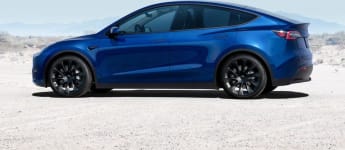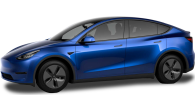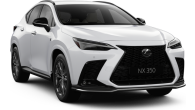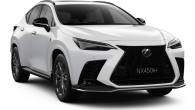The Model Y is more than just Australia’s most anticipated electric car, it’s one of most anticipated new vehicles for 2022 full stop.
To prove this point, within a week of going on sale, the Model Y’s waiting list has already blown out to roughly a year, with orders continually flowing in for the electric car which has thus far conquered the world.
It’s the most popular EV in the USA, and I think it’s a safe bet that within 18 months of its launch in Australia, it will be the most popular electric vehicle here, too.
Can this SUV possibly live up to the absurd hype which has built up around it? Stick with us as we take a look.
Tesla Model Y 2022: Performance
| Engine Type | 0.0L |
|---|---|
| Fuel Type | Electric |
| Fuel Efficiency | 0.0L/100km (combined) |
| Seating | 5 |
| Price From | $81,510 - $93,720 |
| Safety Rating |
|
Does it represent good value for the price? What features does it come with?
8 / 10
Perhaps the most important contributor to the Model Y's, or even Telsa’s success as a brand is it continues to offer above and beyond features and a range on cars priced close to the entry-point of the EV market.
The Model 3 has gone from strength to strength, weathering continued price increases by also improving across the board, whether its build quality (yes, the Shanghai-built cars are much better) or range (with the new LFP battery adding even more than before.)
Can the Model Y continue this trend? The signs are initially against it. Yes, it only costs $5000 more than the equivalent Model 3, but just a week after it went on sale in Australia it was hit by a price-rise, with the ticket for the entry-level Rear-Wheel Drive model boosted to $72,300. Lucky for those with quick trigger-fingers on the order button, who managed to pick one up at the original $63,900 starting price.
Unfortunately, the Model Y’s price falls above the $3000 rebate value in NSW where we tested the car, meaning it was only eligible for a stamp duty exemption (Although, that's also close to $3000).

The entry-level Y also has slightly less range than the equivalent Model 3, at a WLTP-rated 455km, losing nearly 40km. We’ll talk about this more in the ‘range and charging’ part of this review.
For now there is no mid-spec Long Range Model Y, with the next variant up being the full-fat Performance, with a price-tag now set a hair's breadth under $100K, at $96,700.
The Performance has largely the same standard equipment as the base car, although it adds a bigger battery allowing for a 514km driving range, a second motor on the front axle for a 0-100km/h sprint time of 3.7 seconds, aluminium sports pedals on the inside, lowered suspension, and the signature 21-inch ‘Uberturbine’ alloy wheels.

Standard gear on the base Rear-Wheel Drive which we tested for this review included smaller 19-inch alloys with aerodynamic hubcaps, synthetic leather interior trim, Tesla’s signature 15-inch all-encompassing multimedia touchscreen with integrated nav and always-online connectivity, heating for every seat position, dual-zone climate control, a panoramic glass roof, LED headlights, and a powered tailgate.
Our car also had an optional premium paint valued at $1500, as well as the alternate black and white interior, also $1500.
Overseas the Model Y can be optioned with seven seats at a cost which roughly equates to $4500 Australian dollars, however this option is not yet available to Australian buyers.

Considering the extensive offering, particularly how comprehensive and seamless its app and navigation connectivity is, plus how much range is even on the base car, value is still very much up the top of what you can expect in this segment.
However, the recent increase in price places the Model Y in dangerous territory, as it is now more expensive than entry versions of the Hyundai Ioniq 5 and Kia EV6, both are also bespoke electric cars on dedicated EV underpinnings.
It doesn’t help the Model Y is also notably missing V2L (the ability to power or charge devices externally) or an in-car power outlet. It’s also missing Apple CarPlay and Android Auto connectivity despite its impressive software offering, with the brand hoping you’ll use built-in versions of your favourite apps.
Too bad if you frequently use one which the Tesla doesn't have. Not the EV Swiss army knife it could be.
Is there anything interesting about its design?
8 / 10
The Model Y shares the same slick aesthetic as the rest of the Tesla range. The featureless guise, marked only by the LED headlights is a modern one, and the lack of frills on its exterior play into its minimalist Silicon Valley vibe.
It’s a little anonymous, but perhaps this has helped it be globally appealing thus far. It’s form is more than just about looks, though. It is also functional.
The Model Y has a very trim drag coefficient, at just 0.23Cd, something which is of key importance to consumption in the electric era.
The side profile of the Model Y meanwhile adds a contemporary coupe-SUV silhouette, while the boot lid, which finishes nicely with a flick-up spoiler, is a bit high.

This creates a bit of an expanse of panel work at the rear. To me this makes the Model Y’s rear three quarter its least appealing angle, and the height and angle of the rear window creates some visibility issues we’ll look at in the practicality section of this review.
Inside, Tesla continues with the Apple Store look and feel with a totally pared back space. The clean line of the dash is interrupted only by the big centre panel, and while this is a little frustrating for various reasons we’ll look at next, it does create a clean, spacious area for front passengers.
I (at 182cm tall) had excellent room in all directions, for my legs, head, and knees, and there is something very pleasing about the distinct lack of buttons or need for cables.

Even the materials have been chosen well, with nice soft leather or Alcantara trims adorning the doors and lower portion of the dash. Dual-bay wireless charging is a nice touch to avoid the need to clutter the space up.
Tesla’s software suite deserves a special mention. Ultra-fast and very well presented, this is car software for a new era. The always-online functionality means its Google-based nav is always up-to-date and can even be viewed in satellite mode, plus the phone-like operability is very polished.
It’s not necessarily the best to use while you’re on the move though. More on that next.

How practical is the space inside?
9 / 10
The key drawcard for the Model Y is the fact it is an SUV. Everybody assumes SUVs are practical, but not all are much more practical than their passenger car relations.
Thankfully, the Model Y is one of those which offers a lot more than its Model 3 sibling.
The front seats, which aren’t bad in the Model 3, are improved significantly in the Model Y. Thanks to its higher seating position, the driver and front passenger are offered a more commanding view of the road, but also a perfectly flat floor unlike the floor in the Model 3 which is on a gradient to facilitate the batteries.

This goes a long way to making the space feel larger, with adults having much more space to adjust their feet and knees. The interior ceiling has also been raised, with plenty of headroom for most.
The front doors feature a large bottle holder and bin, and there are a further two non-adjustable bottle holders in the centre console.
Identical to the Model 3, the Y features a large storage area with sliding cover under the multimedia panel, and a second slightly smaller one under the padded armrest.
The rear seat is also massively improved, featuring the same flat floor, but a higher seat base, and increased legroom with space for passengers to stretch their feet under the front seat.

Despite the descending roofline, headroom feels significantly improved, too. Rear passengers are treated to a small bottle holder and bin in the doors, two more in the drop-down centre armrest, pockets on the backs of the front seats, dual adjustable air vents (but no third climate zone), and dual USB-C outlets.
The boot is excellent, coming in at a massive 854 litres. This makes it one of the largest cargo areas in its small-to-mid-size SUV segment, although it does include the massive underfloor storage space in the total volume.
With the second-row up, the Model Y fit our three-piece CarsGuide luggage set with relative ease, without the need to place the smallest case in the under floor section.

It is also a more versatile space than the one offered in the Model 3, with the rear seats folding down to offer over 2000 litres of total luggage space in a cavernous area. Watch out for all the glass if you plan to load unwieldy bits of furniture, though!
The frunk is even slightly larger than the one in the Model 3, at 117 litres. It still could only fit our smallest CarsGuide luggage case (36L) but is perhaps best used as a space to leave all your charging gear.
Finally, a signature practicality trick in all Teslas is the ability to use the App to pre-set pretty much everything in the car, from the navigation to the heated seats and climate functions. Very handy on hot Australian summer days, as you can’t close the massive glass roof.
What are the key stats for the drivetrain?
9 / 10
Tesla does not officially talk about the power and torque specs of its electric motors, although generally the brand’s performance aspirations has them performing well compared to rivals.
Hardware seems to be identical to the Model 3, which means more than adequate punch, although, with the additional weight, it doesn’t feel quite as sharp as its sedan sibling.
The Model Y RWD ships exclusively with the brand’s latest LFP battery. This means an increase in range over its more traditional lithium-ion predecessor, but also avoiding the need for the controversially-sourced cobalt in its production.
As a reminder, this means the base Rear-Drive model can travel 455km on a single charge, while the Performance can travel 514km on a single charge. Great range for an EV in this class.
How much energy does it consume?
9 / 10
The Model Y Rear-Wheel Drive we tested has an official energy consumption claim of 14.6kWh/100km which is excellent for something in this size-bracket. Our testing of the car actually managed to best this number, with my three days of testing involving over 300km of mixed conditions landing at 14.3kWh/100km. Surprisingly good.
The Performance variant is slightly less efficient at a claimed 15.4kWh/100km, but you’ll have to wait for a follow up test for us to validate that number.
Before you go nuts customising your Model Y, keep in mind larger alloy wheels can be significantly detrimental to range on an EV, our car had the most eco-friendly standard wheels with aerodynamic hubcaps.

When it comes to charging, the Model Y is the same as the Model 3, offering a solid 11kW charge rate on AC, the same as its key rivals, but a well above par 250kW on a DC charger.
The brand says using one of its ‘Supercharger’ locations you can expect around 300km of range to be added in just five minutes. The battery has a pre-conditioning system which preps it to the optimal temperature if you set a supercharger location as the destination in the navigation system. We suggest using it if you’re in a hurry.
While the Model Y doesn’t offer V2L, it is able to make use of the most extensive set of charging hardware in the country, thanks to its ability to charge at the usual public EV locations, as well as the Tesla ones, which are software locked to other EVs.
Warranty & Safety Rating
What safety equipment is fitted? What safety rating?
9 / 10
To me, a score of nine or 10 in the safety category requires something beyond the usual active equipment list. It demands innovation, or at least to bring something new. I believe the Teslas do that through their unrivalled array of sensors and cameras, which relay to a central computer.
This is, of course, required for the brand’s signature and ever-controversial ‘Autopilot’ self-driving technology, but it has the consequence of the car building a comprehensive map of hazards around it unlike pretty much any other vehicle on sale.
This is best expressed through the car’s ‘self-driving’ visualisation screen, which takes up the right-hand side of the touch panel while driving.
It’s a look-in to the cars ‘brain’ and acts as a radar reference for the driver. The car sees things and categorises them, giving you the confidence it will always know when a collision is imminent.
On the topic of the ‘Autopilot’ suite, I can hardly recommend the ‘Full Self Driving’ version. At a cost of a whopping $10,100 the value add is questionable, given the car isn’t legally allowed to drive itself.
The standard advanced cruise system is more than enough, allowing the car to all but drive itself, with reminders to keep your hands on the wheel.
It is alarmingly good at lane adjustments and impressively smooth when it comes to steering itself and keeping the correct speed, although when faced with rapidly slowing traffic it proved to jam on the brakes a bit abruptly at times.
Equivalent versions of auto emergency braking, lane keep assist, blind-spot monitoring, and rear cross-traffic alert are also all present. The Model Y is yet to be rated by ANCAP but it has scored as well as the maximum five-star rated Model 3 overseas.
The rear seats feature two outboard ISOFIX and three top-tether child-seat mounting points.
What does it cost to own? What warranty is offered?
7 / 10
As with the rest of Tesla’s range, the Model Y has a disappointing four-year and 80,000km full-car warranty, behind only BMW when it comes to mainstream automakers.
Tesla is hoping its eight-year and 192,000km battery and drivetrain warranty will be enough to win consumers over. I can’t help but wonder what happens should the main panel fail in any way, though.
It is a lot cheaper to run an electric car than it is to fuel one up, though, and Tesla’s limited list of service items (coolants and filters mainly, EVs require minimal parts) seems reasonably priced.
It is worth noting all Model 3s and Ys ship with expensive EV-specific Hankook or Michelin tyres. You’ll want to keep these in good shape and replace them on time as a badly worn set, or change to a cheaper or non-EV specific set will detrimentally impact energy consumption.
The Model Y has condition-based servicing, meaning it will tell you when it wants to go to a Tesla workshop.
What's it like to drive?
8 / 10
I was lucky enough to have tested the Model Y back-to-back against an equivalent-spec Model 3, and things were quite revealing.
As mentioned earlier, the driving position is immediately quite beneficial, with a better view of the road out front, and the more commanding aspect which SUV buyers love.
The rear, however, manages to have an even more limited view than the Model 3 due to the sloped roof and high boot lid, leaving you with only a tiny letterbox aspect to see directly out the rear.
The Model Y maintains the same key interactive elements to the Model 3. This means a somewhat artificial steering tune, which is also a little heavy, even in its lightest 'comfort' mode.
Acceleration is instantaneous, making the Y feel rapid and agile, and while the steering is heavy, it is also responsive, making this heavy EV feel quite reactive and fun.

It’s not quite as fun as the Model 3, though. The extra weight and ride height means performance is blunted a little, and it feels burdened in the corners. It simply doesn’t stick to the tarmac as well, and is more inclined to punish its tyres.
Still, it is absolutely possible to have a blast in this SUV, even if it doesn’t quite have the urgency or confidence of its little sibling.
Then there’s the ride. The Model Y rides hard. Unnecessarily hard. It’s the same issue which is present in the Model 3, only you notice it more with the Y’s additional heft over sharp bumps and frequent corrugations.
To its credit, it means it handles better than it probably would with a significantly softer treatment, but it would mean a world of difference to take the harsh edge off of it. I think most family focused buyers (i.e. the target audience for an SUV) would make the trade.
The radar screen and software looks great, and for the most part is okay to use, especially the radar display, but it’s a shame this car hasn’t compensated for the lack of a digital dash by adding even a holographic display.

It means you have to direct your eyes a significant distance from the road to peer at your speed on the centrally-located panel. While each context menu on this screen is packed with info, some of the touch elements are also small and annoying to jab at while your trying to drive. Even the climate functions are like this.
It’s a shame to have a system which looks this good, but is at times quite annoying to use.
One thing the Model Y is excellent at, though, is how smooth its drive characteristics are. Once you get used to its regenerative braking, the experience of driving this car is just nice.

The deceleration has an exponential aspect to it, so you can just gradually let the accelerator pedal out to come to a near-stop. It’s similar to the 'i-pedal' system used in Hyundai Group EVs, although feels a bit smarter in the way it rolls the regen on.
It's very efficient, too, using the regen or blended braking in the little gaps where some other EVs would simply use mechanical brakes.
While we have covered some negatives here, the Model Y is still an excellent EV to drive. It’s undeniably rapid, more so than most other SUVs in this size and price bracket, it’s quiet in the cabin, and has those smooth regen characteristics which most EV buyers love.
It’s just a little odd it doesn’t have a more family-friendly ride and the option for lighter steering.
Verdict
After this review I have no doubt the Model Y will set the sales charts on fire. It brings all the elements buyers are loving about the Model 3 while adding a healthy dose of practicality in an approachable SUV package.
I love the interconnectedness of this car and a lot of its sleek software features are hard to go back from once you’ve experienced them. But I also think as an SUV it has its share of flaws, particularly when it comes to the usability of some of its functions while you’re on the move, and its unnecessarily harsh ride.
While it seems a way of rivalling something like a RAV4 for family comfort and ergonomics, then, the Rear-Wheel Drive version of the Model Y in particular is a blockbuster EV at a reasonable price. It won’t be long before we’re seeing them everywhere.
Pricing Guides

Range and Specs
| Vehicle | Specs | Price* |
|---|---|---|
| Performance | Electric, 1 SPEED AUTOMATIC | $81,510 - $93,720 |
| Rear-Wheel Drive | Electric, 1 SPEED AUTOMATIC | $43,120 - $50,160 |








.jpg)
.jpg)










.jpg)

.jpg)

